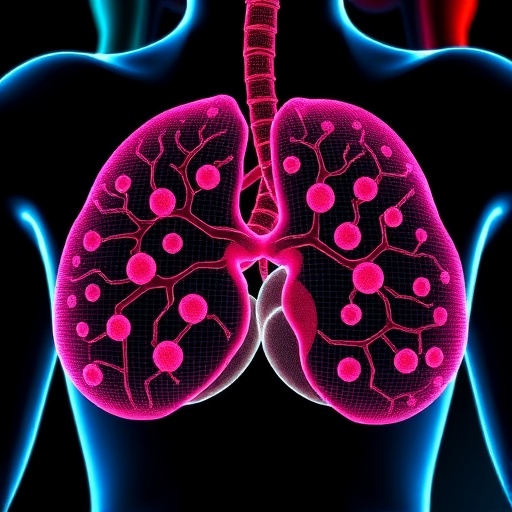June 21, 2017 — A study by researchers at Columbia University Medical Center and the Mailman School of Public Health found that applying continuous positive airway pressure (CPAP), a form of non-invasive ventilation, decreased mortality in children with respiratory distress. Findings from the clinical trial in Ghana indicate that the procedure especially benefitted children less than one year of age. Results of the study are published online in The Lancet Global Health.
CPAP can improve respiratory rate and survival in children with primary pulmonary diseases. The latest findings confirmed that no serious adverse events were associated with the treatment that it is safe and effective to use in district-level hospitals, and a step forward in treating children with respiratory distress in resource-limited settings.
The study, which followed 1,025 patients and 1,175 controls, was conducted at two first-level hospitals or district hospitals in Ghana where invasive mechanical ventilation was not routinely available, and nurses initiated and managed care with once or twice daily physician rounds.
Two-week all-cause mortality in children 1 year of age and younger significantly decreased when CPAP was continuously applied: 3 percent of patients in the CPAP group versus 7 percent of patients in the control group who were not given the therapy. In children of all ages – one month to 5 years, respiratory rate was significantly lower in the CPAP group at 4 hour, 8 hour, 12 hour, and 24 hour time points.
"In addition to demonstrating the safety of CPAP and the children's improved survival rates, our study is unique in that CPAP was initiated and managed by emergency ward nurses who work much of the day without direct supervision by a physician," said Rachel T. Moresky, MD, MPH, Mailman School of Public Health associate professor of Population and Family Health, associate professor of Medicine, Emergency Medicine at Columbia University Medical Center, and senior author.
Dr. Moresky continued, "Other CPAP studies in low-resource settings have been demonstrated at tertiary hospitals or university hospitals and with physician specialists applying the CPAP treatments. Our study demonstrates task-sharing this skill to nurses can bring lifesaving care closer to the community."
Pneumonia, sepsis, and severe malaria kill more than 2 million children younger than 5 years every year. These treatable illnesses can progress to respiratory failure. Most of these deaths occur in low-income and middle-income countries, where diagnostic and therapeutic interventions are often severely scarce.
The World Health Organization recommends redistributing healthcare tasks to less highly trained individuals. "With a nurse to doctor ratio of 8:1 in many African nations, successful training of nurses to effectively and safely apply CPAP will be crucial for its proliferation in non-tertiary hospitals," says Dr. Moresky, who is also director of the International Emergency Medicine Fellowship program at Columbia.
"Our findings coupled with the results from two smaller studies in Bangladesh and Malawi support the use of non-invasive ventilation for children presenting with acute respiratory distress in low-resource settings," noted Patrick T. Wilson, MD, MPH, Columbia University Medical Center assistant professor of Pediatrics, Mailman School of Public Health assistant professor of Population and Family Health, and lead author.
The results also suggest that the use of CPAP in young children with respiratory insufficiency is appropriate in other parts of the developing world, where diagnostic capabilities are similarly limited. The study showed that for every 25 children under the age of 1 year treated with CPAP, one life can be saved and most patients will have improved respiratory rates for at least 24 hours.
Dr. Wilson concludes, "The results of the study are remarkable in that it included children with a wide range of disease processes, making it more generalizable to real life settings in low- and middle-income countries around the world."
###
Co-authors: Sara Lopez-Pintado, Department of Biostatistics, Mailman School of Public Health; Frank Baiden, Ensign College of Public Health, Ghana; Joshua C Brooks, School of Medicine, University of Queensland-Ochsner, Brisbane, Australia; Marilyn C Morris, Department of Pediatrics, Columbia University Medical Center; Katie Giessler, Global Health Sciences, University of California San Francisco; Damien Punguyire, Municipal Health Directorate, Ghana; Gavin Apio, Kintampo Municipal Hospital, Ghana; Akua Agyeman-Ampromfi, Centre for Global Health Research, Ghana; Justice Sylverken, Department of Pediatrics, Komfo Anokye Teaching Hospital, Ghana; Kwadwo Nyarko-Jectey, Mampong Municipal Hospital, Ghana; and Harry Tagbor, School of Medicine, University of Health and Allied Sciences, Ghana
The study was supported by General Electric Foundation, Columbia University sidHARTe Program (#PT-AABK1277).
Columbia University's Mailman School of Public Health
Founded in 1922, Columbia University's Mailman School of Public Health pursues an agenda of research, education, and service to address the critical and complex public health issues affecting New Yorkers, the nation and the world. The Mailman School is the third largest recipient of NIH grants among schools of public health. Its over 450 multi-disciplinary faculty members work in more than 100 countries around the world, addressing such issues as preventing infectious and chronic diseases, environmental health, maternal and child health, health policy, climate change & health, and public health preparedness. It is a leader in public health education with over 1,300 graduate students from more than 40 nations pursuing a variety of master's and doctoral degree programs. The Mailman School is also home to numerous world-renowned research centers including ICAP and the Center for Infection and Immunity. For more information, please visit http://www.mailman.columbia.edu.
Media Contact
Stephanie Berger
[email protected]
212-305-4372
@ColumbiaMSPH
http://www.mailman.hs.columbia.edu
############
Story Source: Materials provided by Scienmag




